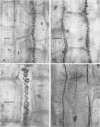Abstract
Epichloë typhina, a clavicipitaceous systemic phytopathogen, was isolated from two varieties and three hybrids of tall fescue (Festuca arundinaceae). The morphology of the fescue isolates was compared with E. typhina isolated from bent grass (Agrostis perennans). In all isolates, conidia were identical and were typical of E. typhina. In fescue grasses the endophyte failed to produce stromata, but on bent grass the fungus seasonally produced stromata, typical of the genus. Cattle grazing the fescue grasses showed signs of the fescue toxicity syndrome, the E. typhina was found in frequencies of 100%; in grasses from pastures in which cattle showed no signs of the syndrome, frequencies were 0 to 50%. Nutritional factors in vitro were more complex for the isolates from fescue than for the isolate from bent grass. These studies suggested that E. typhina includes biotypes that might be involved in the toxicity syndrome. The fescue biotypes grew poorly on media, and yields were inadequate for toxicity studies. However, the bent grass isolate grew well on three media, and extracts from two of these were toxic to chicken embryos. All isolates produced in vitro the nontoxic fungal steroid tetraenone [ergosta-4,6,8(14),22-tetraen-3-one], which has been isolated from toxic fescue grasses.
Full text
PDF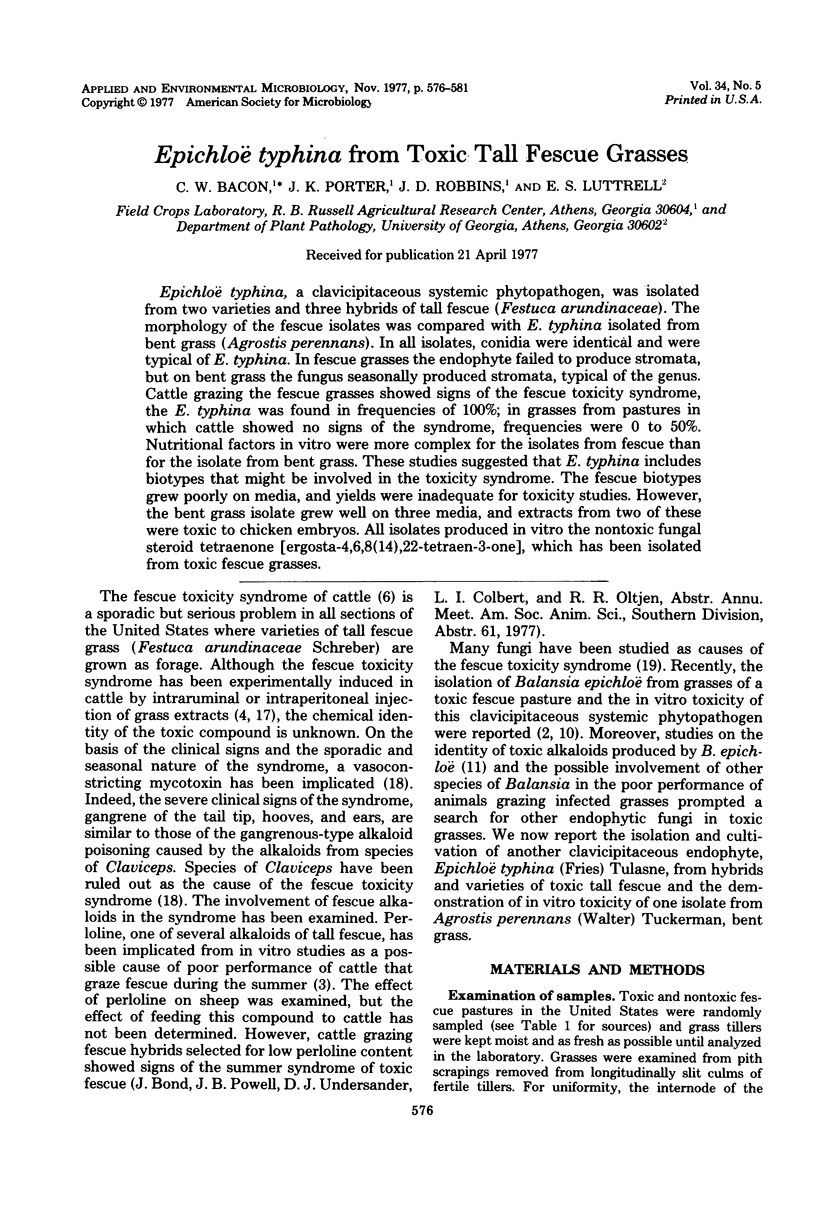
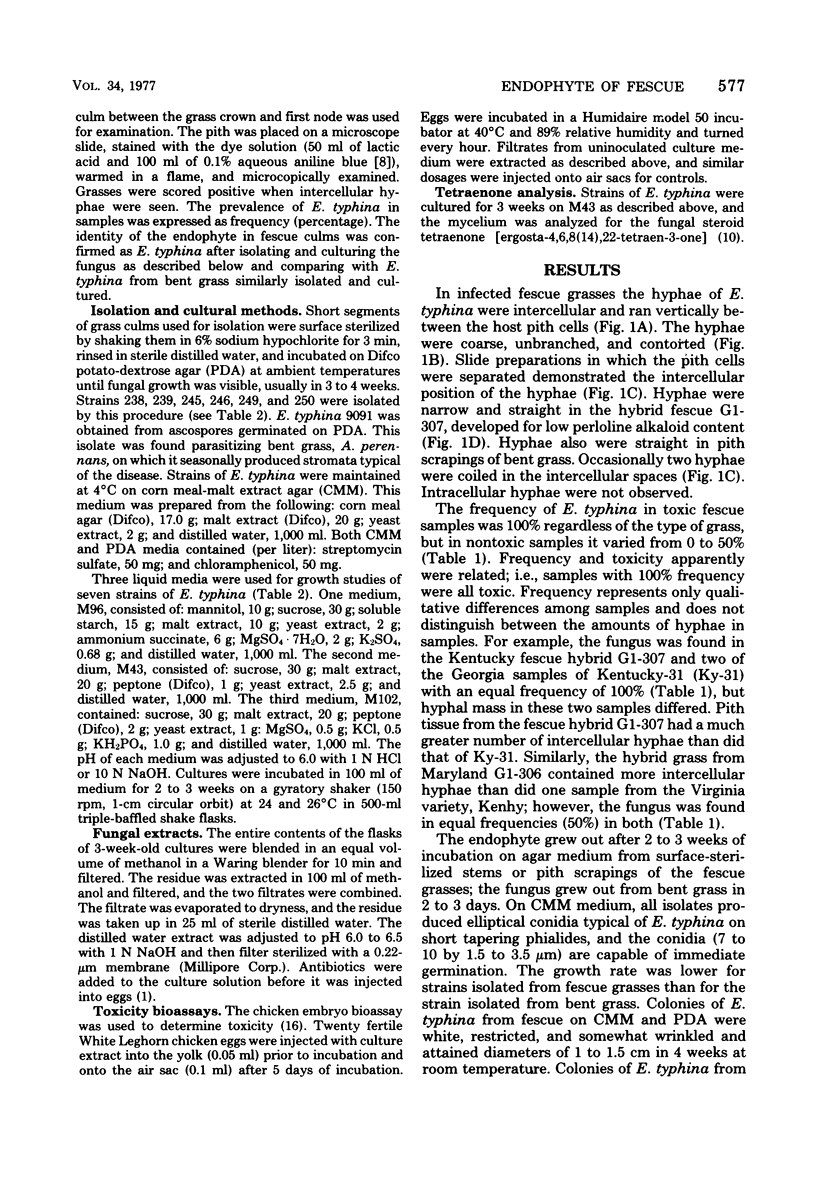
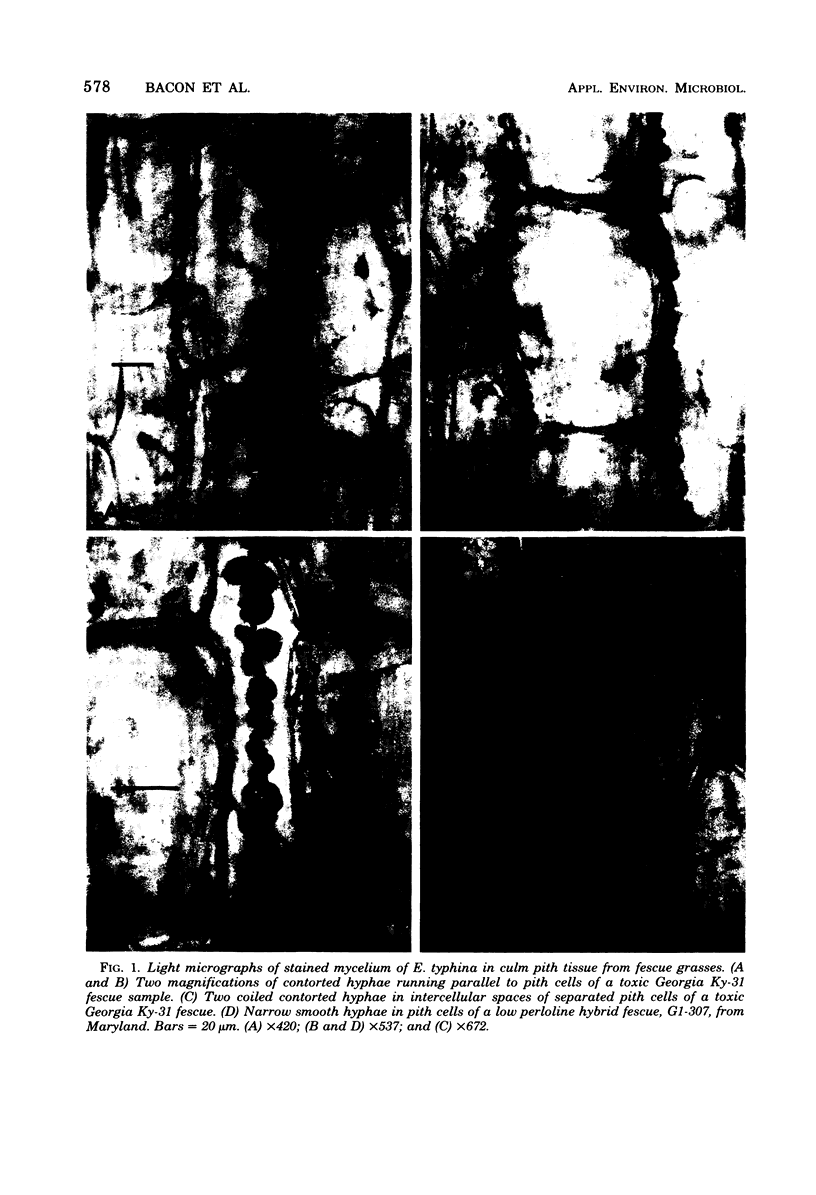

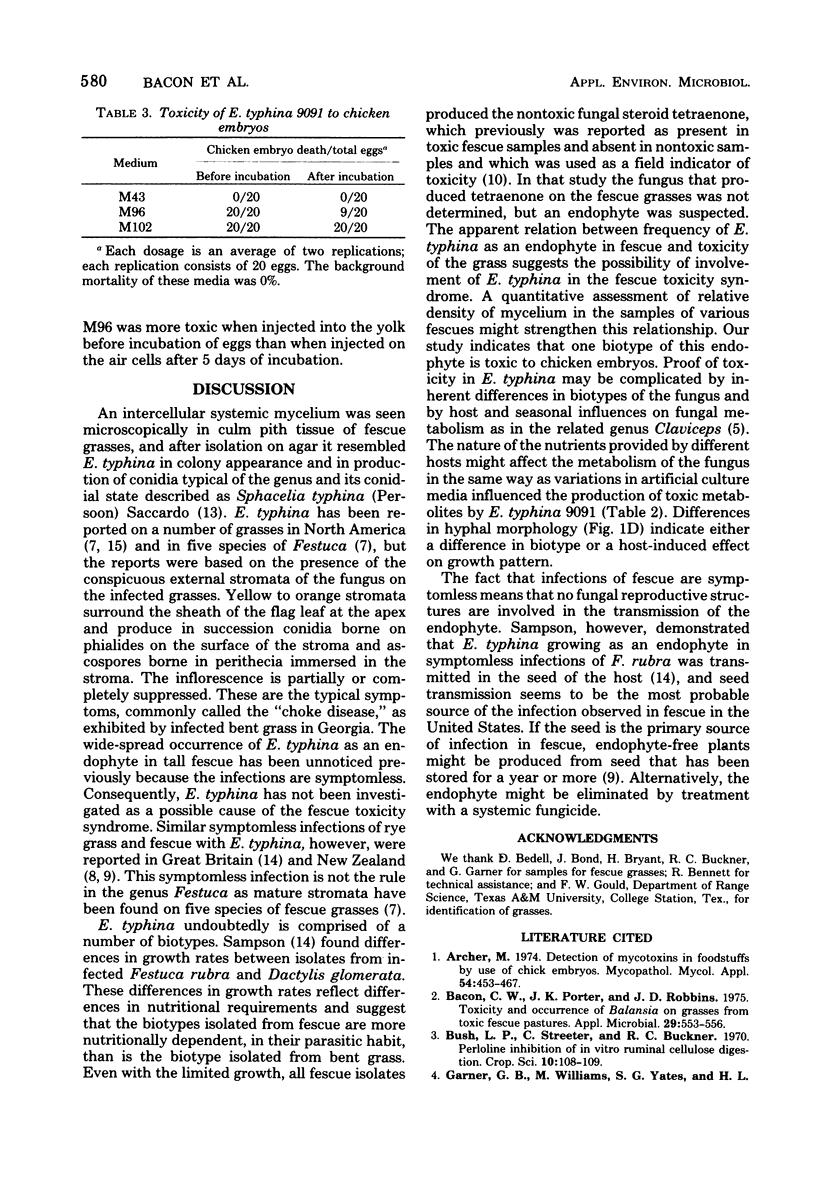

Images in this article
Selected References
These references are in PubMed. This may not be the complete list of references from this article.
- Archer M. Detection of mycotoxins in foodstuffs by use of chick embryos. Mycopathol Mycol Appl. 1974 Dec 18;54(4):453–467. doi: 10.1007/BF02050051. [DOI] [PubMed] [Google Scholar]
- Bacon C. W., Porter J. K., Robbins J. D. Toxicity and occurrence of Balansia on grasses from toxic fescue pastures. Appl Microbiol. 1975 Apr;29(4):553–556. doi: 10.1128/am.29.4.553-556.1975. [DOI] [PMC free article] [PubMed] [Google Scholar]
- Porter J. K., Bacon C. W., Robbins J. D., Higman H. C. A field indicator in plants associated with ergot-type toxicities in cattle. J Agric Food Chem. 1975 Jul-Aug;23(4):771–775. doi: 10.1021/jf60200a050. [DOI] [PubMed] [Google Scholar]
- Porter J. K., Bacon C. W., Robbins J. D., Himmelsbach D. S., Higman H. C. Indole alkaloids from Balansia epichloë (Weese). J Agric Food Chem. 1976 Jan-Feb;25(1):88–93. doi: 10.1021/jf60209a043. [DOI] [PubMed] [Google Scholar]
- Williams M., Shaffer S. R., Garner G. B., Yates S. G., Tookey H. L., Kintner L. D., Nelson S. L., McGinity J. T. Induction of fescue foot syndrome in cattle by fractionated extracts of toxic fescue hay. Am J Vet Res. 1975 Sep;36(9):1353–1357. [PubMed] [Google Scholar]



